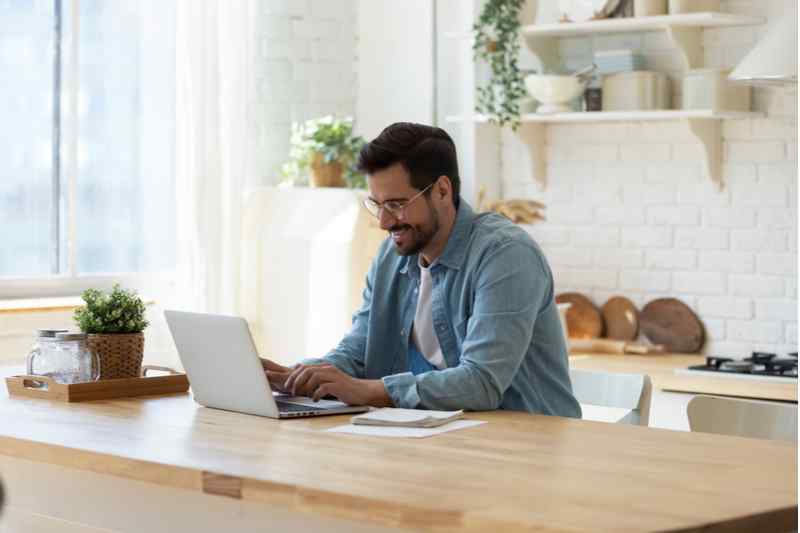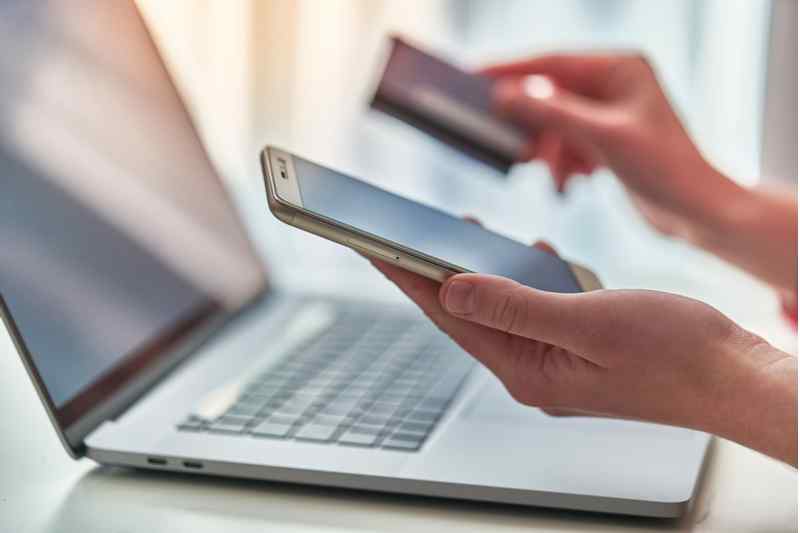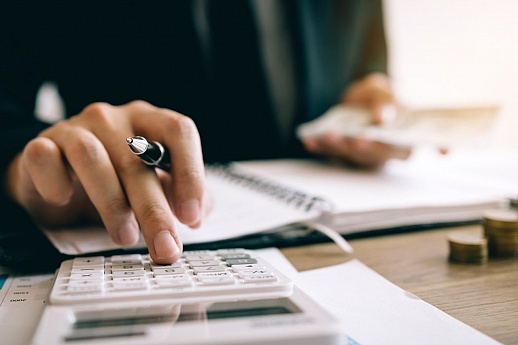The Importance of Cyber Security in Banking
A recent study of consumer banking habits shows that 71% of American bank customers regularly use online banking services. 41% of consumers use mobile banking apps. Chances are, you also use your bank's online platforms, but how safe is online banking? You may wonder what risks you take when you engage with your bank through online platforms or mobile apps and what your banking institution does to keep its customers secure. After all, when it comes to your finances, you can never be too safe.
Biggest Cyber Security Banking Threats
In the modern age, nearly every financial institution utilizes the internet in their daily operations. Therefore, cybersecurity in banking is essential to the well-being of both banks and their users.
SQN Banking Systems, a cybersecurity company, identifies the five biggest threats to online banking security.
Unencrypted data
Even with the best technology on the market, it's possible for hackers to access confidential information. It happens more often than you might think. Encryption is the frontline of digital defense in cybersecurity in banking. Even if a hacker does get their hands on your data, they will not be able to utilize it in any harmful way if the files are encrypted. Encrypting files gives your bank extra time to respond to any serious security breaches before they get out of control.
Unsecure third parties
Most financial institutions enlist third parties' services to handle back-end transactions and improve efficiency for their customers. This is standard practice. However, every additional link in the chain leaves opportunities for hackers to compromise sensitive information.
Malware
Malware is one of the biggest threats you may encounter on your end. Malware (malicious software) sometimes uses your connection, be it through a computer or smartphone, as a conduit for accessing the bank's network and stealing or corrupting files.
Spoofing
Spoofing refers to when cyber attackers impersonate a legitimate site's URL to trick users into entering login information. Hackers will steal that information and store it to use later.
Phishing
Phishing is one of the most dangerous cybersecurity threats. It tricks people into providing sensitive information. Cyber thieves may ask for this information under false pretenses in emails in which they impersonate a bank or other financial institution. Some phishing is very difficult to detect even with the best cyber security in banking. Phishers may use very similar logos and URLs. Once they have your information, they may be able to make fraudulent charges or even steal your identity.
How Banks Protect Your Information

The Federal Deposit Insurance Corporation (FDIC) is responsible for protecting customer information and money by working with banks and other financial institutions to make sure they comply with various laws and regulations. Part of their duties involves education about cybersecurity news. As of 2001, federal regulations have required financial institutions to instate security programs that protect customer information. Below are some of the ways banks safeguard their customers’ sensitive data.
Encryption
As mentioned above, unencrypted data breaches are one of the principal causes of stolen information. Any reputable financial institution knows this and makes sure all the information stored in their system and networks are encrypted into code that only the bank can read.
Privacy policies
All banks have privacy agreements designed to protect both the bank and their customers. Bank employees must comply with these rules and are subject to state and federal mandates that require them to complete extensive training on how to handle sensitive financial information with the utmost caution.
Multi-factor identification
Banks utilize multi-factor identification to ensure users are who they say they are. This consists of information only the customer should know, such as a password or PIN, and documentation the customer has, such as a credit or debit card, bank account number, or home address. Banks also have back-end multi-factor identification measures to ensure the security of their customers' information. Whenever you interact with your bank, be it over the phone, online, or in person, you should use multi-factor identification.
How Secure is Online Banking?

We've established how brick and mortar banks and their online platforms keep your information secure, but what about online-only banks? Can they offer secure banking, too? Online-only banks, such as Discover Bank, Charles-Schwab, and Capital One, are rising in popularity. Many customers find them reliable and easy to use, but are they safe?
There is no straightforward, definitive answer, but the consensus is that they are safe to use as long as the FDIC insures them. To check whether an online-only bank is insured, visit fdic.gov and use FDIC's BankFind tool. There you will find the complete catalog of FDIC-insured banks. You can use this tool to search by the bank's name or web address.
Nine Tips for Staying Safe While Banking Online

You can’t just rely on your financial institution for cybersecurity in banking. Below, we've compiled a list of some of the best tips from trusted experts such as the FDIC and US News Money for how to stay safe when using your bank's online services.
Use a strong password
When setting your password, you should always be sure to use a combination of upper and lower-case letters, numbers, and special characters. Never use public information tied to you and easily traceable, for example, your birthdate, address, or the name of your pet. Never use the same password for multiple accounts. If a hacker compromised one of those passwords, the criminal responsible would have access to all of your accounts. Consider changing your passwords regularly.
Check accounts for fraud
You should periodically check your accounts for signs of fraudulent activity. Setting a schedule for when to review your accounts, just as you would a paper statement, is helpful. Luckily, online banking allows you to quickly and easily monitor your accounts. It's better to find out sooner than later whether something malicious has occurred.
Install antivirus and malware detection software
As we've already mentioned, malware is one of the major ways cyber attackers can access entry into your bank's network to use your information against you. Installing antivirus and malware detection software on your devices is one of the best things you can do on your end to secure your data from theft. Malware can infect your computer in various ways, such as phishing emails or downloaded files from an infected website. Antivirus software searches for and removes malware, and may be the difference between safety and identity theft. Be sure to thoroughly research and check reviews for malware detection or antivirus programs before installing them. Some companies may be less reputable than others, and some products may be less effective than others at providing cybersecurity in banking. Be sure that whichever product you choose comes with tech support should your computer become infected.
Another tip for avoiding malware that may infect your desktop or laptop through phishing emails is to utilize the spam and junk mail filter in your email accounts. Filters will catch most phishing emails, but not all. You should still be on alert whenever you are asked to download a file or provide sensitive information. Other computer security tools may be necessary, too.
Only use your personal device for online banking
Be careful where and how you connect to your bank to deposit money, withdraw funds, or pay off a finance charge. You should only connect to online banking services through a personal, not shared or the public, device. Public computers at libraries, hotels, or internet cafes are likely not as secure as your personal computer. They may be infected with malware. Information is frequently stolen this way from unsuspecting patrons. Hackers know that many people filter in and out of public computers, logging into various accounts and perhaps forgetting to log out. This is a common way for login information to be stolen.
Don't bank online on public Wi-Fi
Even if you use your personal device, you aren't in the clear. Never open your account through public Wi-Fi, such as Wi-Fi available in retail stores or other public places. Hackers can still use this brief connection to steal information.
Secure your smartphone
If you regularly use your smartphone to access bank services, make sure you have security measures in place in case your phone is lost or stolen. Our phones carry a plethora of sensitive information that can be detrimental in the hands of a criminal. You should use a password or biometric security features such as fingerprint or facial recognition, as well as the auto-lock feature that will close your phone when it's out of use for several minutes or seconds. You should also be able to delete data from your phone if it is lost or stolen via a remote wipe. If you've backed up your device, you should be able to restore this information when you get your device back.
Use Multi-factor identification
Multi-factor identification is one of the easiest safety precautions you can take on your end. Using a two-step process, such as entering a code sent to your email or phone, ensures that no one other than you can access your accounts.
Set up text alerts
Set up text alerts for your mobile banking apps. This will ensure that you stay up-to-date on all activity on your account. That way, if a fraudulent charge or withdrawal is made on your account, you'll be notified immediately. You can rest assured that no criminal activity will slip through the cracks.
Use a Virtual Private Network (VPN)
If you're extra paranoid about a data breach to your accounts, consider using a virtual private network on all your personal devices, including your phone. Using a VPN is an excellent way to ensure that you access a safe, secure network wherever you are.





